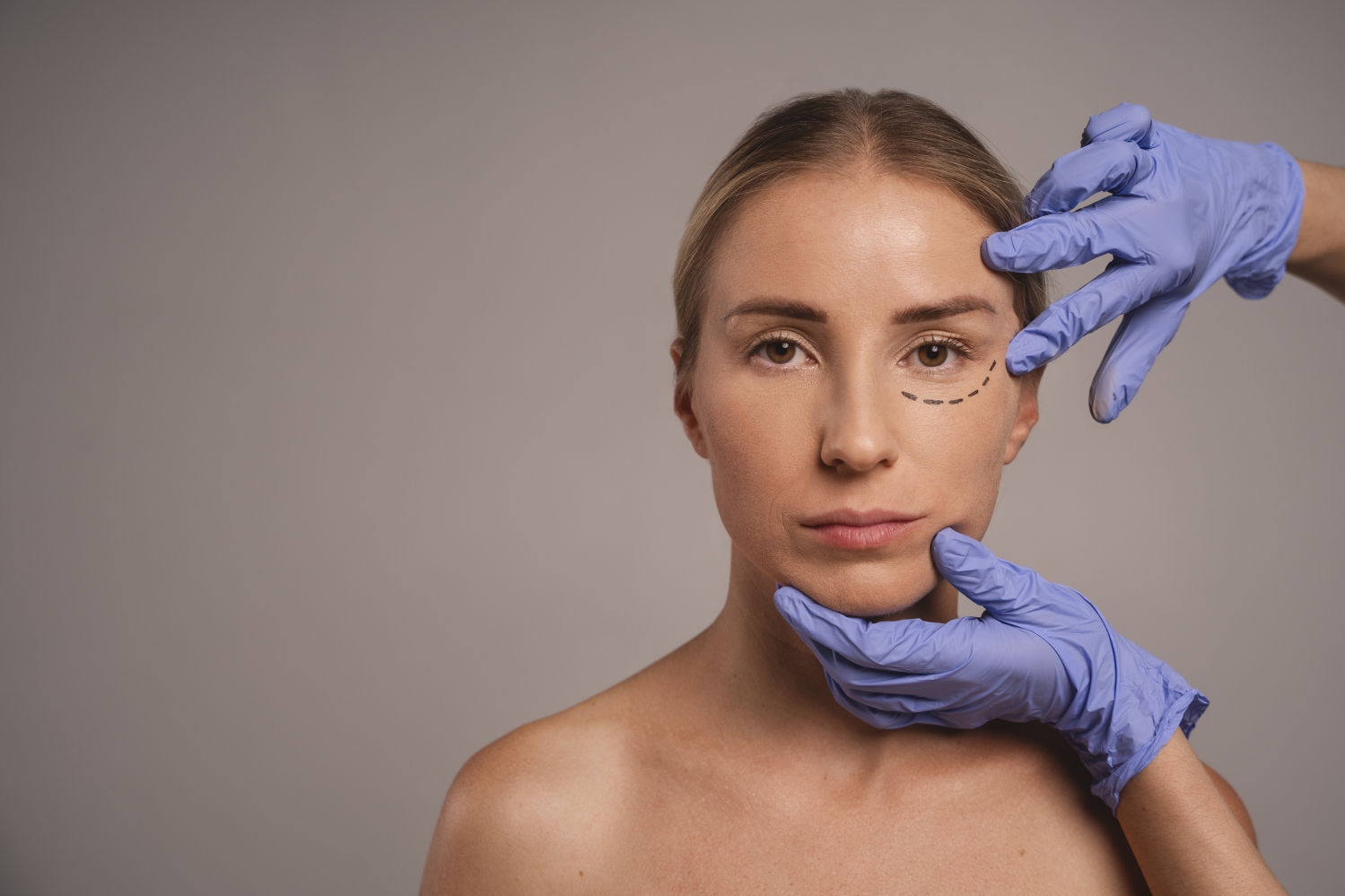Experience exceptional care and cutting-edge technology at Dynasty Clinic.
Our Location
- Villa 159 - Umm Al Sheif Riad - Al Safa 2 - Dubai
- info@dynastyclinic.ae
- 04 330 0048
-
Mon - Fri : 10.00 A.M - 9.00 P.M
Sat - Sun : 10.00 A.M - 7.00 P.M
Experience exceptional care and cutting-edge technology at Dynasty Clinic.

The Procedure
During a blepharoplasty procedure, the surgeon carefully makes incisions in the natural creases of the eyelids or inside the lower eyelid to minimize visible scarring. Excess skin, fat, and muscle are then removed or repositioned to achieve the desired contour. The procedure typically lasts one to three hours, depending on whether both upper and lower eyelids are being treated.
Benefits of Blepharoplasty
Blepharoplasty offers several benefits, including reducing puffiness and bags under the eyes, eliminating drooping or sagging eyelids, improving vision obstructed by excess upper eyelid skin, and creating a more youthful, rested, and alert appearance. This procedure can significantly enhance the symmetry and contour of the eye area, providing a refreshed look.
Blepharoplasty, also known as eyelid surgery, offers a range of potential benefits for those seeking to address concerns about their eyelids. Here’s a closer look at some of the key advantages:
Improved Appearance: The primary benefit is achieving a more youthful and refreshed appearance. Blepharoplasty can reduce puffiness, eliminate under-eye bags, and address drooping upper eyelids, creating a smoother and more alert look.
Enhanced Vision: In some cases, blepharoplasty can improve vision. Drooping upper eyelids can obstruct the visual field, and blepharoplasty can correct this issue, improving peripheral or upper field of vision.
Boosted Confidence: Eyelid concerns can sometimes lead to self-consciousness. Blepharoplasty can address these concerns and potentially boost self-confidence and overall well-being.
More Lasting Results: Compared to some non-surgical cosmetic treatments for the eyelids, blepharoplasty offers potentially longer-lasting results. While aging will continue, the effects of blepharoplasty can be significant and durable for many years.
However, it’s important to consider these points as well:
Surgical Procedure: Blepharoplasty is an elective surgery with inherent risks like bleeding, infection, and temporary vision changes. Careful selection of a qualified surgeon is crucial.
Recovery Time: There’s a recovery period after blepharoplasty, with potential for swelling, bruising, and temporary discomfort. Following post-operative care instructions is essential for optimal healing.
Realistic Expectations: While blepharoplasty can achieve significant improvements, it won’t stop the aging process entirely. Maintaining a healthy lifestyle can contribute to lasting results.
Not for Everyone: Blepharoplasty is not suitable for everyone. Consulting with an oculoplastic surgeon can help determine if you’re a good candidate for the procedure based on your health and specific concerns.
Overall, blepharoplasty can be a valuable procedure for those seeking to address drooping eyelids, puffiness, or other eyelid concerns that impact their appearance or vision. It’s important to weigh the potential benefits against the risks and recovery process to make an informed decision.
Ideal Candidates for Blepharoplasty
Ideal candidates for blepharoplasty are individuals experiencing sagging or drooping eyelids, under-eye bags, or excess skin that impairs vision. Candidates should be in good overall health, have realistic expectations, and seek to enhance the appearance of their eyelids for a more youthful and rested look.
Here’s a breakdown of what you can expect during a blepharoplasty procedure, also known as eyelid surgery:
Pre-Surgery Consultation:
Surgery:
Post-Surgical Recovery:
Recovery Timeline:
Important to Remember:
Recovery and Results
Recovery from blepharoplasty involves some swelling, bruising, and discomfort, which can be managed with medication and proper aftercare. Most patients can return to light activities within a week and resume normal activities after two to three weeks. The results, which reveal a more youthful and rejuvenated eye area, become increasingly visible as swelling subsides over the next few months.
Blepharoplasty is a surgical procedure that corrects drooping eyelids and puffy bags under the eyes. Here are some general guidelines for post-treatment care after Blepharoplasty:
Consultation
During your consultation, the surgeon will evaluate your eyelid anatomy, discuss your aesthetic goals, and explain the different blepharoplasty techniques. This personalized approach ensures that your treatment plan is tailored to achieve the best possible outcome for your unique needs.
Why Choose Us?
Our team of skilled surgeons specializes in delivering exceptional blepharoplasty results. By combining advanced surgical techniques with a personalized approach, we ensure each patient achieves a rejuvenated and natural-looking enhancement of the eye area. Our commitment to patient care and satisfaction makes us a trusted choice for blepharoplasty surgery.
For more information or to schedule a consultation, contact us today. Refresh your appearance and restore your youthful, vibrant eyes with our expert blepharoplasty surgery.
Mon – Fri :
10.00 A.M – 9.00 P.M
Sat – Sun :
10.00 A.M – 7.00 P.M

WhatsApp us